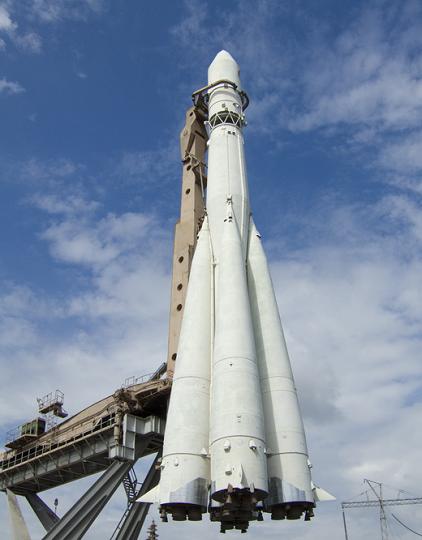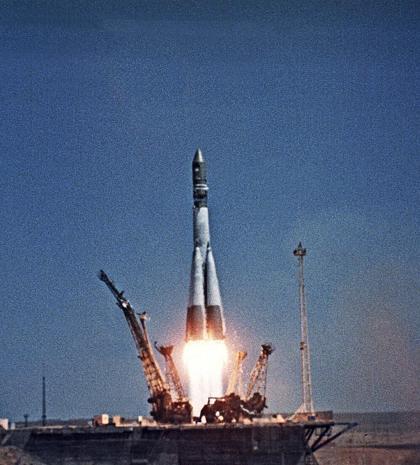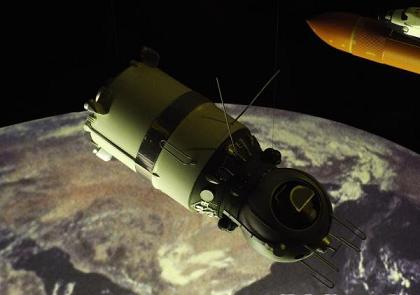Wostok

The Vostok was a type of spacecraft built by the Soviet Union.The Vostok program was a Soviet space program project that ran from 1960 to 1963 and achieved many spectacular milestones in spaceflight, including placing the first man in space, the first woman in space, and the first joint flight of two different crewed orbiters.
The Vostok spacecraft was originally designed for use both as a camera platform (for the Soviet Union's first spy satellite program, Zenit) and as a crewed spacecraft. The basic Vostok design has remained in use for some 40 years, gradually adapted for a range of other uncrewed satellites. The descent module design was reused, in heavily modified form, by the Voskhod program. The first human spaceflight was accomplished with Vostok 1 on April 12, 1961, by Soviet cosmonaut Yuri Gagarin.

The craft consisted of a spherical descent module (mass 2.46 tonnes, diameter 2.3 meters), which housed the cosmonaut, instruments and escape system, and a biconical instrument module (mass 2.27 tonnes, 2.25 m long, 2.43 m wide), which contained propellant and the engine system.
There were several models of the Vostok leading up to the crewed version:
- Vostok 1K - prototype spacecraft.
- Vostok 2K - Photo-reconnaissance and signals intelligence spacecraft. Later named Zenit satellite.
- Vostok 3KA - was the spacecraft used for the first human spaceflights. They were launched from Baikonur Cosmodrome using Vostok 8K72K launch vehicles.

The first flight of a Vostok 3KA occurred on March 9, 1961. The first flight with a Yuri Gagarin葉ook place on April 12, 1961. The last flight遊ostok 6 carrying the first woman in space, Valentina Tereshkova葉ook place on June 16, 1963.
A total of 8 Vostok 3KA spacecraft were flown, 6 of them with a human crew.